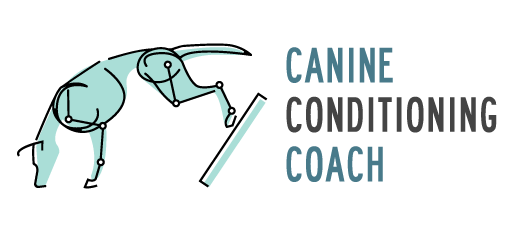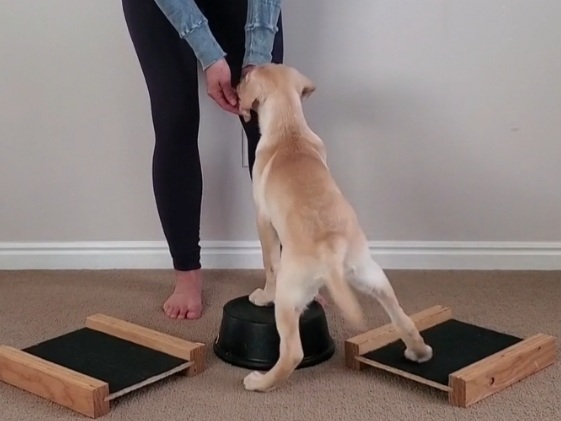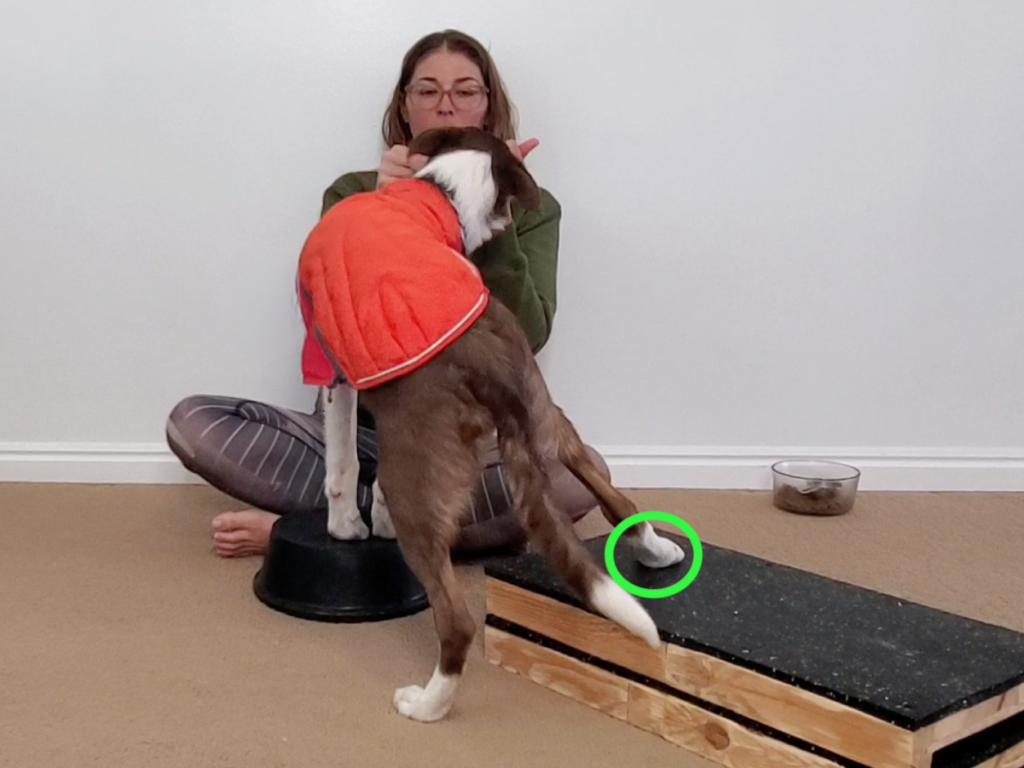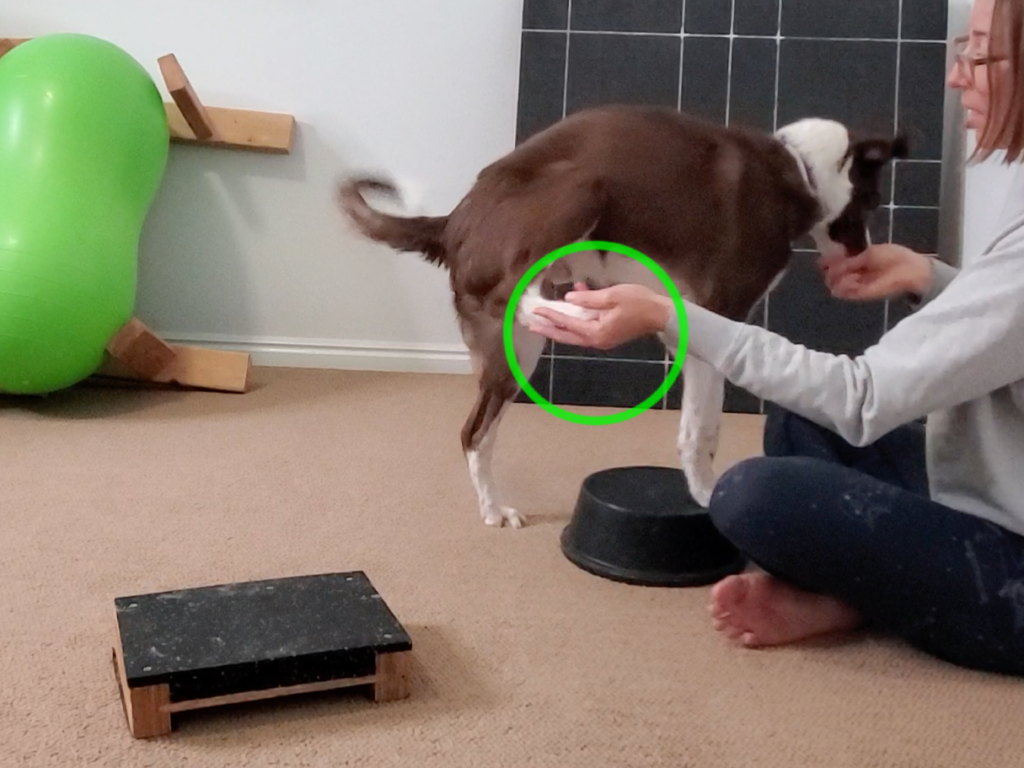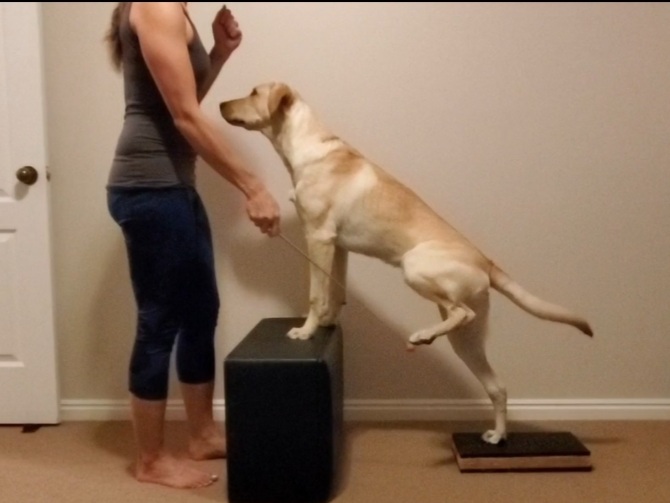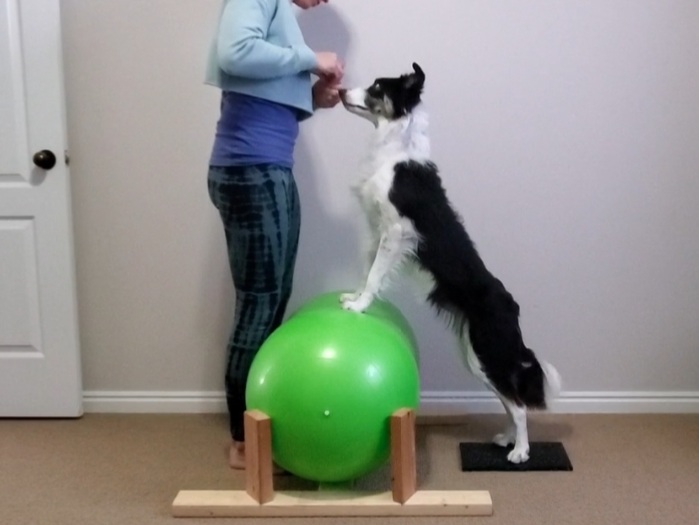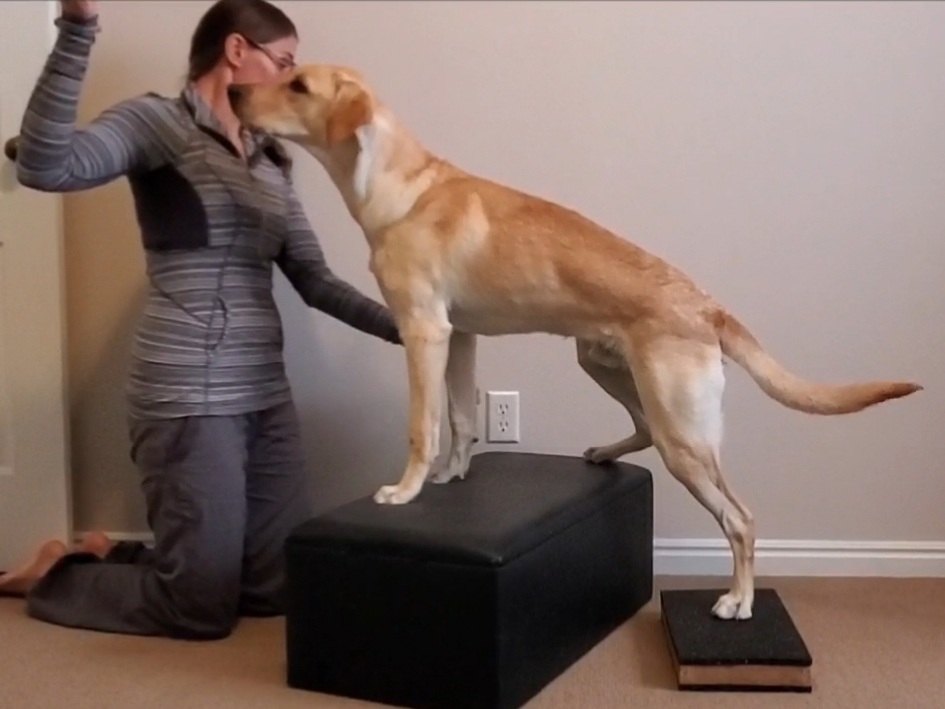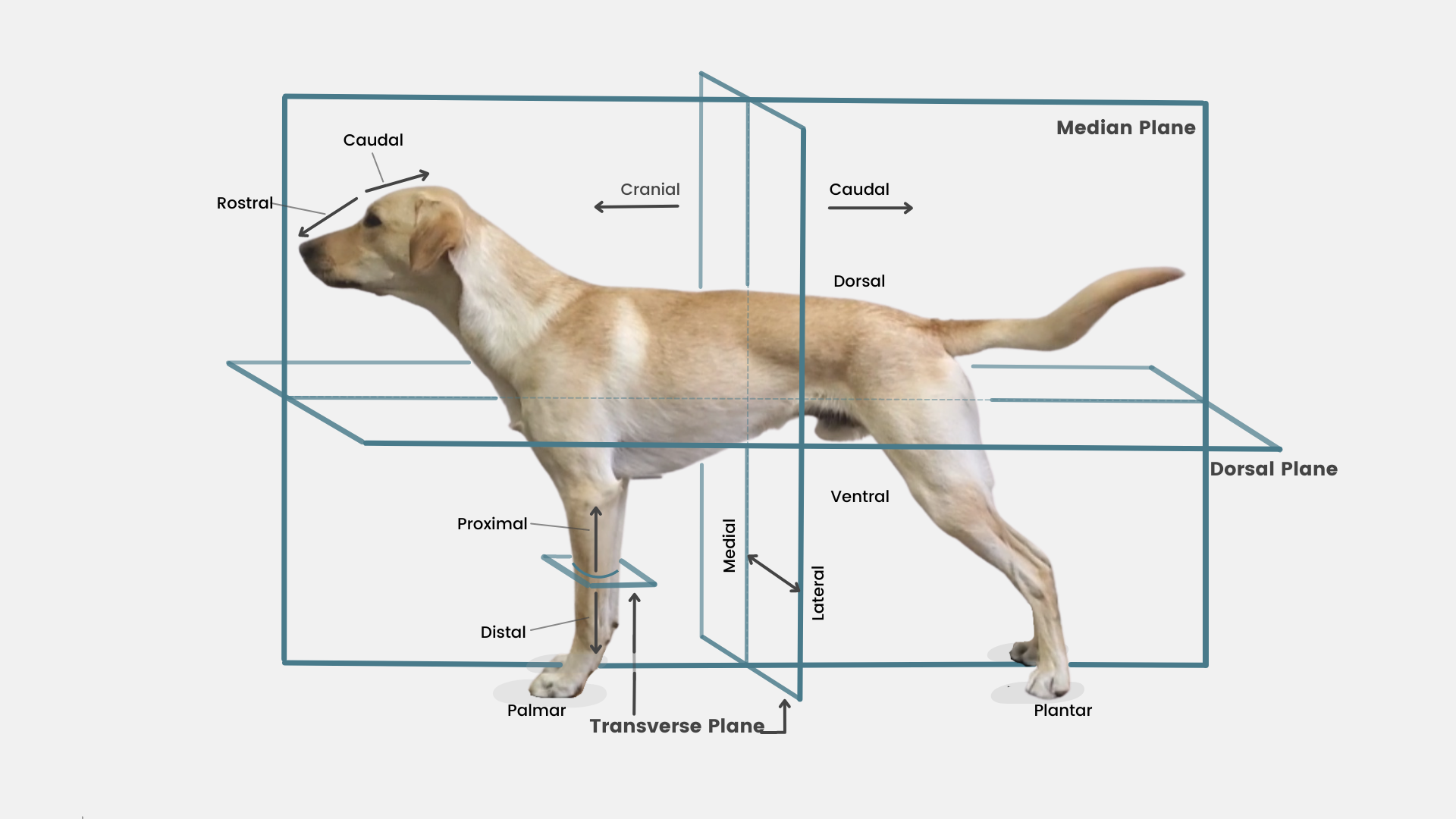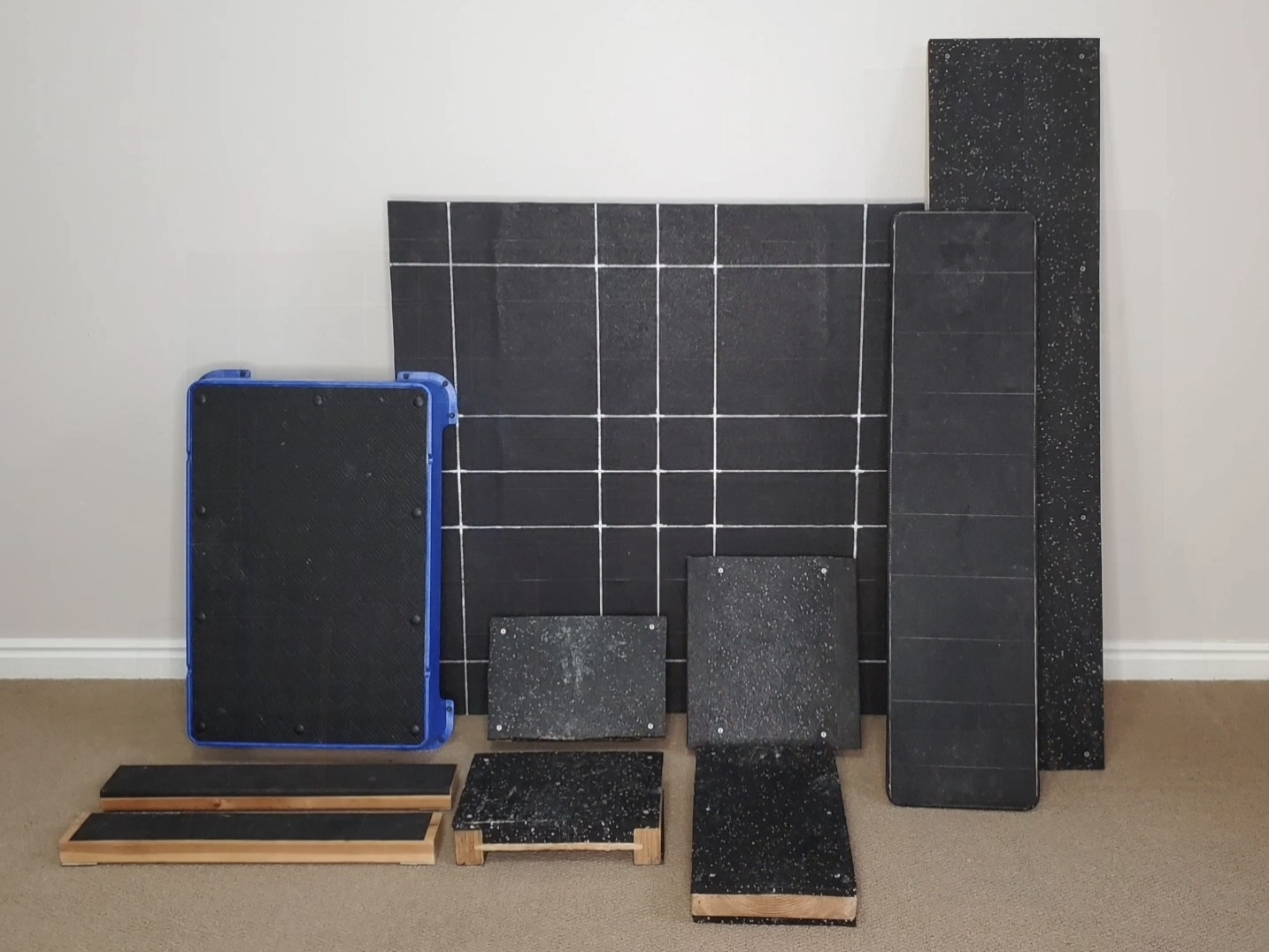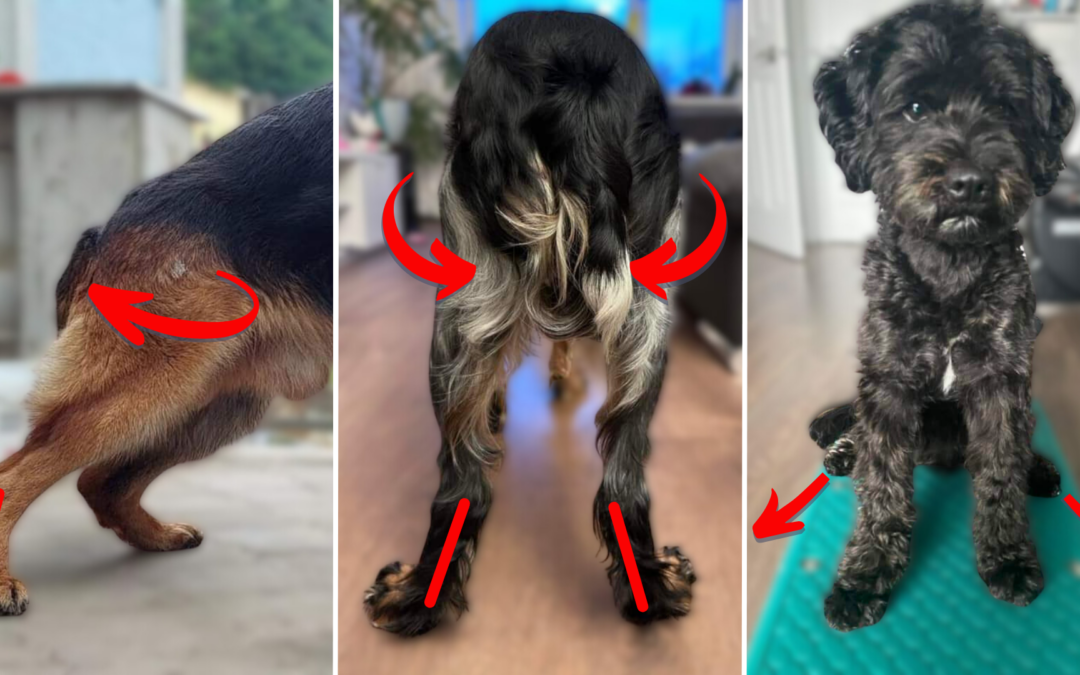Purpose: In this video we take the behavior learned in the Rear Foot to Hand Target (Part 1) and (Part 2) variations and turn them from a “movement” into an actual exercise. The first portion of this tutorial covers eliminating the Side Stepping behavior we have built in. We will do this by using a narrow platform / Standing Platform to limit the space the dog has available, making the Side Stepping behavior incompatible with the Rear Foot to Hand behavior. I really like the Cato Plank for this phase. The second phase of this video brings the rear end and spine into proper alignment by introducing separate Front and Rear Foot Targets. By more clearly defining the space the rear feet have to stay within, the rear limbs and spine are “forced” to stay in neutral alignment, improving posture, and ensuring proper muscle recruitment.
Equipment: Rubber Feed Bowl, raised Standing Platform or Cato Plank
Targets: Now that this Rear Foot to Hand Target “behavior” is turned into an actual exercise with specific alignment requirements, the muscles that we are targeting can be more clearly defined. We are targeting the medial and lateral hip rotators on the grounded leg, including the gluteals, obturators, and gemelli. The hamstrings, specifically the biceps femoris are being strongly recruited on the grounded leg as well, providing stability to the stifle, and hip. On the lifted leg we are targeting the hip flexors, including the iliopsoas, proximal sartorius, and rectus femoris. The epaxials, hypaxials and abdominal are also being heavily recruited, as are the shoulder stabilizers, specifically the shoulder opposite the grounded rear leg.
NOTE: It’s critical to work through the first portion of this video to fluency before attempting the variation covered in the second portion of this video. Eliminating the Side Stepping component can completely change the muscle recruitment pattern for some dogs. As a result, there can be a bit of a learning curve, and an initial degradation of the Rear Foot to Hand Target behavior. Try not to panic, and definitely don’t rush things. If a solid foundation has been built, it’s just a matter of practice before your pup gets it. Remember, good dog training comes first. Conditioning comes second.
Troubleshooting:
- To keep things consistent, I continue to use the rubber feed bowls as the Front Foot Target throughout all progressions. The upside of this is contextual clues are maintained throughout, and the front feet are elevated. Having the front feet slightly elevated shifts weight into the rear, and helps remind the dog to keep their rear feet still. BUT for some dogs this can bee too much of a challenge. So if your pup is struggling, placing the rubber feed bowls on the ground is always an option.
- When transitioning to separate Front and Rear Foot Targets in the second portion of this tutorial, the main focus is having the dog keep the grounded rear leg on the Rear Foot Target. If your pup is losing balance, hopping/stepping the grounded leg onto the floor, or showing changes in arousal, the gap between the targets may be too wide for their current strength. Shortening the gap between the targets temporarily, and working up to “neutral position” is 100% allowed.
